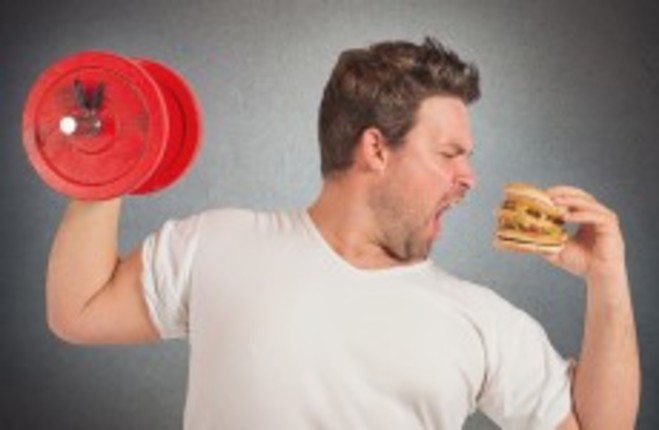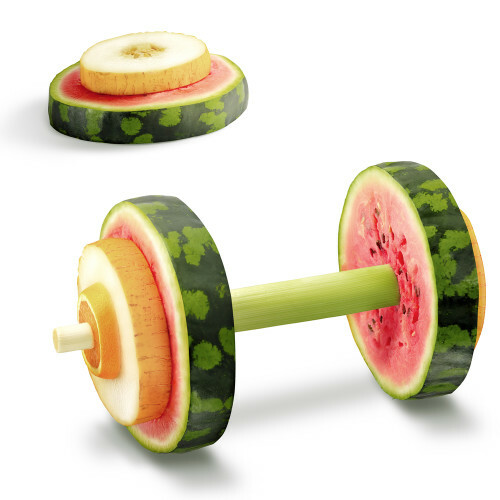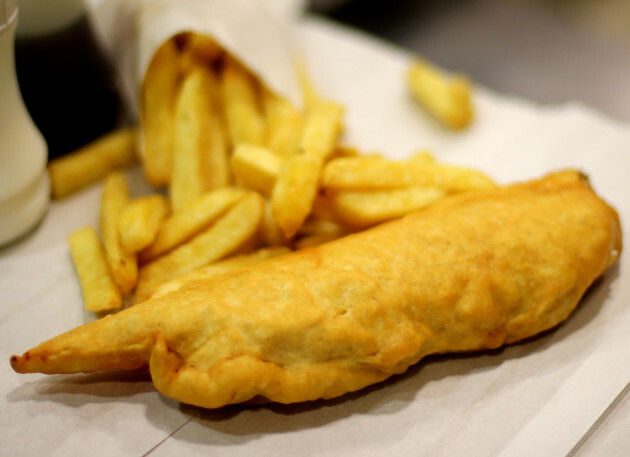COMPLETING A HARD training session is a highly rewarding experience but, for some, it’s a licence to pig out and eat what we like.
But, as you’ll see, you run the risk of negating all potential benefits and ending up in a worse state than before you started, if you don’t refuel properly and adequately.
“For the beginner who may be trying to shed some weight, they feel that because they’ve done an hour of hard gym work, they can eat what they like afterwards, perhaps as a sense of reward or simply because they feel hungry,” argues Richelle Flanagan, a Dublin-based dietitian at nutritionwise.ie
“The reality is, a hard exercise session may only have burnt 200kcals and the bar of chocolate and the can of fizzy drink on the way home will contain maybe 400kcals, so all that effort has gone to waste.”
To lose weight involves consistent training with consistent proper nutrition. One won’t work without the other.
“Many people don’t realise that it takes 60-90 minutes of exercise five days a week to really get the weight loss going through exercise alone. That’s why the looking at reducing calories in the diet is the cornerstone for weight loss,” continued Flanagan.
Exercise helps to further reduce weight, but more importantly it helps people to maintain their muscle mass whilst they are trying to lose body fat.
“Also, many people don’t realise that exercise stimulates appetite and they don’t plan for appropriate eating post exercise.
“In addition, dehydration may sometimes make us feel like we’re hungry when in fact, the body needs fluids.
“A hard hour long training session may see the body lose 1L of fluid and 1.5 times this amount of fluid loss needs to be replaced after exercise.
“So, if you’re hitting the gym to lose weight and training for only half an hour then avoid the post-training snacks, drink water after training and stick to your meals only.”
For experienced athletes, the same approach applies.
“Eating what you like after a hard gym session may mean you’re not refuelling the body to take the most out of that training session and prepare you for the next session.
“The body needs carbohydrate and protein after a hard session over 1 hour long.
“This is not in the form of chocolate and a can of fizzy drink or a chipper on the way home.
“Neither of these will provide the body with what it needs after a heavy training session. The chocolate is going to be a lower glycaemic index (GI) food due to its higher fat content which will slow muscle glucose recovery whilst the fizzy drink is hypertonic and so it’s not at the right concentration to aid rehydration after training.
“The fish and chips, being high in fat will also have a low GI and also slow down recovery. It will also provide you with perhaps a whopping 1000kcal!”
The body needs carbohydrates that will refuel glycogen stores and protein to help repair the muscles and reduce muscle breakdown if you are on a resistance training programme.
For the athlete in training, after a moderate to high-intensity training session of over an hour long, the body needs a snack or meal containing approximately 1g carbohydrate per kg body weight and 0.25g protein for kg of body weight.
So for an 80kg athlete that would be 80g carbs and 20g protein.
“If it is likely to be several hours before you can have a meal then a snack meal will suffice such as a wholemeal bread chicken sandwich with a glass of milk followed by a handful of dried fruit.
“If you are having your meal within the hour of finishing your hard session then you don’t need the snack and instead, choose a meal containing lean meat, or chicken, turkey or fish or pulses if you’re vegetarian along with pasta, potatoes or grains such as basmasti rice, couscous, quinoa and a selection of vegetables.
“If you’re going to use a sauce choose a low-fat type such as a tomato-based one or soya sauce if making a stirfry.”


